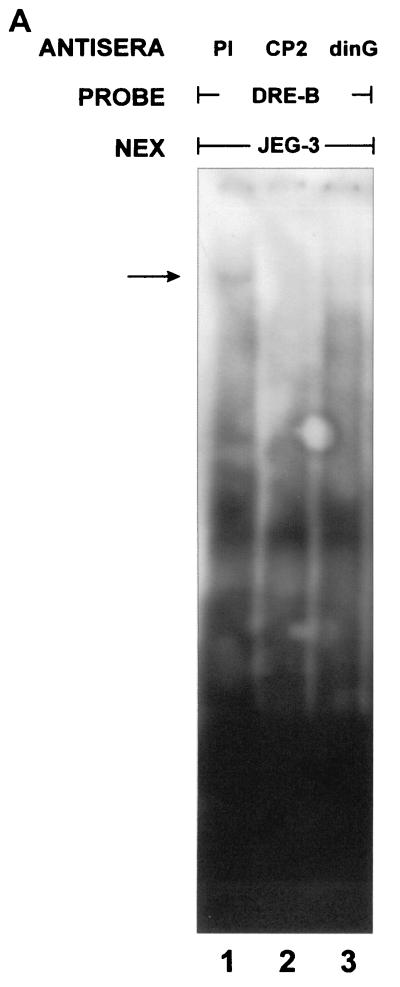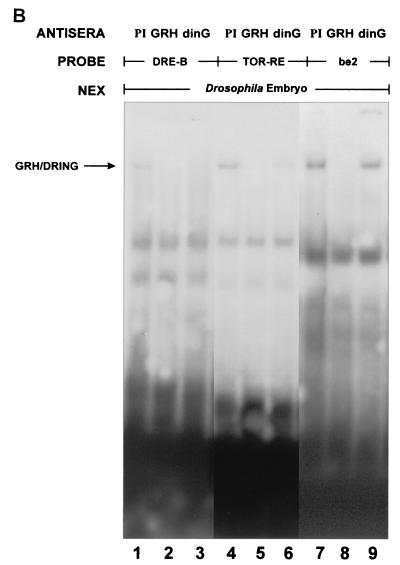FIG. 7.
GRH-like factors and RING PcG form a complex on GRH DNA binding sites that mediate transcriptional repression. (A) Binding of the CP2-dinG complex to DNA. Nuclear extract from the human JEG-3 cell line was studied in an EMSA with a dpp promoter probe (DRE-B) in the presence of preimmune (PI) serum (lane 1), anti-CP2-specific antiserum (lane 2), or anti-dinG antiserum (lane 3). The migration of the CP2-dinG-DNA complex is indicated by an arrow. (B) Binding of the GRH-DRING complex to GRH DNA binding sites that mediate transcriptional repression. Nuclear extract from early (120-min) Drosophila embryos was studied in an EMSA with two probes known to contain GRH-dependent repressor elements (DRE-B from the dpp promoter [26] and TOR-RE from the tll promoter [39]) and one probe containing a GRH-dependent activator sequence (be2 from the Ddc promoter [71]). Reaction mixtures contained preimmune (PI) serum (lanes 1, 4, and 7), anti-GRH antiserum (lanes 2, 5, and 8), or anti-dinG antiserum (which cross-reacts with DRING) (lanes 3, 6, and 9).


